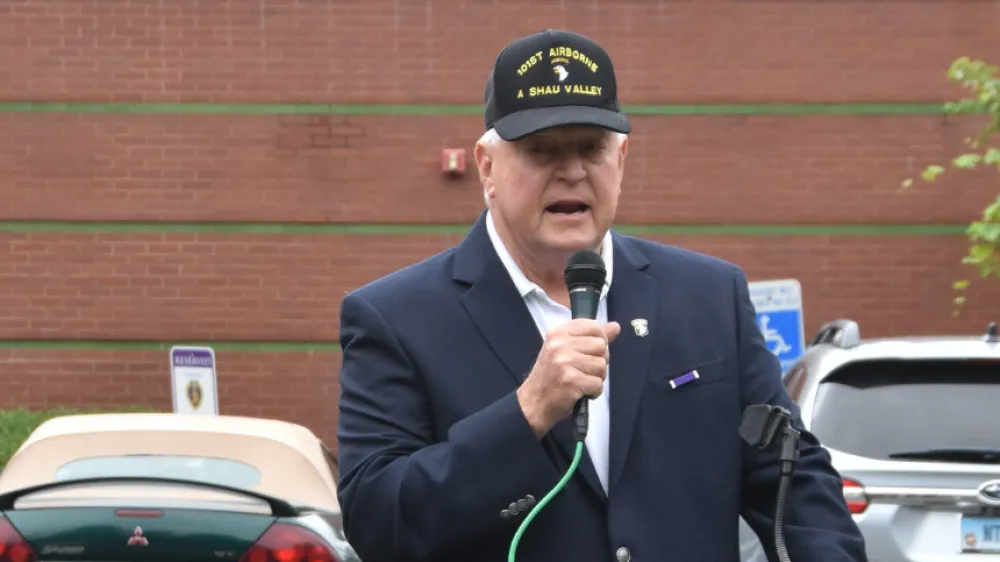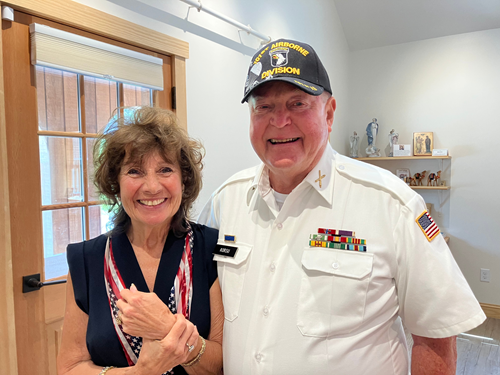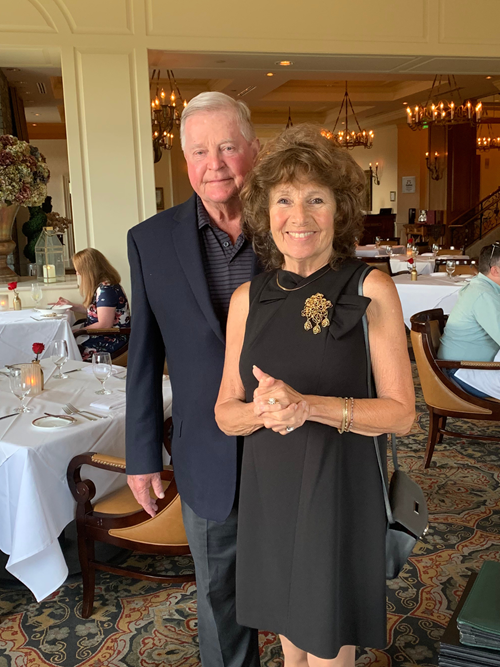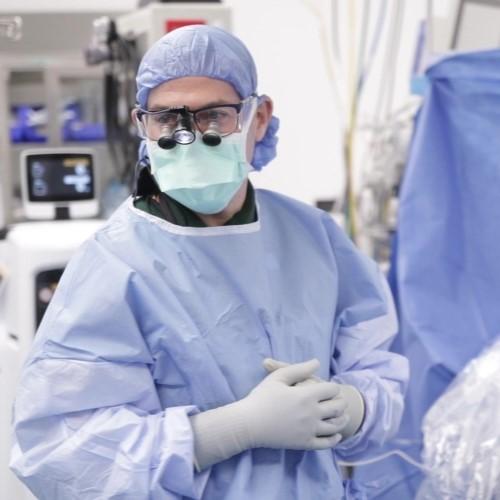Providing your location allows us to show you nearby locations and doctors.
Veteran finds relief from back pain after spine surgery

04/22/2025
After decades of worsening back and leg pain, Kenneth Korsu found relief after spine surgery at Danbury Hospital.
Kenneth Korsu, 81, has called Southbury, Connecticut, home since 1985, where he and his wife, Mary, are deeply involved in their community. A former town selectman, Kenneth spent decades in a fulfilling career as a human resources executive. Now retired, he still enjoys staying busy and helping others.
But behind his active lifestyle was a growing problem: worsening back pain that had been building for more than 20 years.
Chronic back pain that slowly took over
“It’s hard to pinpoint when the injury occurred,” Kenneth said. “But it was probably from a combination of military service and heavy weightlifting.”
Kenneth served in the Vietnam War as an officer in the 101st Airborne Division, and he used to squat 500 pounds.
The wear-and-tear eventually led to a disc herniation and spinal stenosis between the L3 and L5 vertebrae in his lower back. The result: constant lower back pain, nerve pain radiating down his legs — especially the right — and progressive leg weakness.
A disc herniation happens when the soft, cushion-like center of a spinal disc pushes out through a tear in the outer layer and presses on nearby nerves. Spinal stenosis is a narrowing of the spaces in the spine, which puts pressure on the spinal cord or nerves. Both can cause pain, numbness, tingling or weakness in the back and legs.
“Before surgery, the pain was a 15 on a scale of 1 out of 10,” Kenneth said. “Some days, I couldn’t move.”
Related content: Know when to get spine treatment for back and neck pain
Exploring options and finding the right spine surgeon
Over the years, Kenneth tried cortisone injections and physical therapy. They helped, but only temporarily. Eventually, he knew surgery was the right step.
Having spent much of his career overseeing employee health benefits — including medical insurance and retirement programs — Kenneth brought a unique perspective to finding quality healthcare. And after having 13 surgeries himself over the years, he knew what to look for in a surgeon.
He consulted with several spine surgeons before meeting Dr. Scott Sanderson, chief of neurosurgery at Danbury Hospital.
“Dr. Sanderson studied my imaging, gave me a physical exam and listened closely when I described my symptoms,” Kenneth said. “I used to interview doctors in my line of work, so I interviewed Dr. Sanderson. I gained confidence and assurances he was the right surgeon for the job based on his answers.”
Mary played an important role, too.
“Mary is attentive and inquisitive, and she also liked Dr. Sanderson,” Kenneth said.
Kenneth particularly liked that Dr. Sanderson is a neurosurgeon because of his deep knowledge of the nervous system, which runs through the spine.
Related content: 5 ways to prepare to see a spine doctor for back or neck pain
Robotic spine surgery offers immediate relief
Dr. Sanderson performed a robotic-assisted laminectomy and spinal fusion to relieve Kenneth’s pain.
A robotic-assisted laminectomy is a type of back surgery that relieves pressure on the spinal nerves — often caused by conditions like a herniated disc or spinal stenosis. During the procedure, Dr. Sanderson removed a small section of bone (called the lamina) from the back part of the vertebra to make room for the nerves and ease Kenneth’s symptoms.
Dr. Sanderson also performed a spinal fusion to stabilize the spine using screws and rods. He connected — or “fused” — the bones in the affected area to stop painful motion between the bones, relieve pressure on the nerves and give the spine better support.
Dr. Sanderson used advanced robotic technology to guide the surgical tools with great precision. This meant smaller incisions, less damage to the muscles around the spine and a quicker, smoother recovery for Kenneth compared to open surgery.
“I had immediate relief of the leg pain after surgery,” Kenneth said. “It’s amazing: You walk into surgery hurting and feel great right after it.”
Kenneth stayed just one night at Danbury Hospital on the dedicated neuro unit, where he had “a very good experience.”
“I go to many hospitals, and I was very impressed with Danbury Hospital. The facility was nicer, bigger and the food was good,” said Kenneth, who once worked in the restaurant business.
Related content: How to recover from spine surgery
Regaining mobility and strength after spine surgery
Kenneth recovered at home with the help of Danbury Hospital Home Healthcare.
“A therapist came to my house twice per week and helped improve my mobility. It really helped,” Kenneth said.
About two months after surgery, Kenneth no longer needed a walker.
“I was so used to being in pain, I used the walker as a crutch. But I had to get used to moving without pain,” he said.
By four months, he had returned to walking for exercise and going to the gym.
“I gained about 90% of the strength back in my legs,” he said.
He’s also back to maintaining his property and operating farm machinery, which brings him joy.
“I grew up on a farm with 10,000 chickens, who my family raised for eggs,” he said.
Related content: From pain to pickleball: spine surgery for spinal stenosis gives personal trainer her life back
Looking forward to the future after spine surgery
With the worst of the pain behind him, Kenneth is back to doing what he loves — and planning what’s next. He and Mary look forward to traveling and exploring new countries, and he’s looking forward to returning to golfing and chopping wood.

He’s also speaking up as a patient advocate.
“Guys usually don’t like going to the doctor. It’s hard to get over the hurdle and get checked out. But if you have something wrong, deal with it instead of ignoring it,” Kenneth said.
With years of healthcare experience and a long list of procedures behind him, Kenneth also encourages others to take time choosing the right doctor.
“You may be lucky to find the right doctor the first time,” he said. “But it’s OK to explore your options and gain confidence in who your surgeon is going to be for peace of mind.”
Disclaimer: Outcomes from spine surgery vary from person to person. No individual results should be seen as typical.

